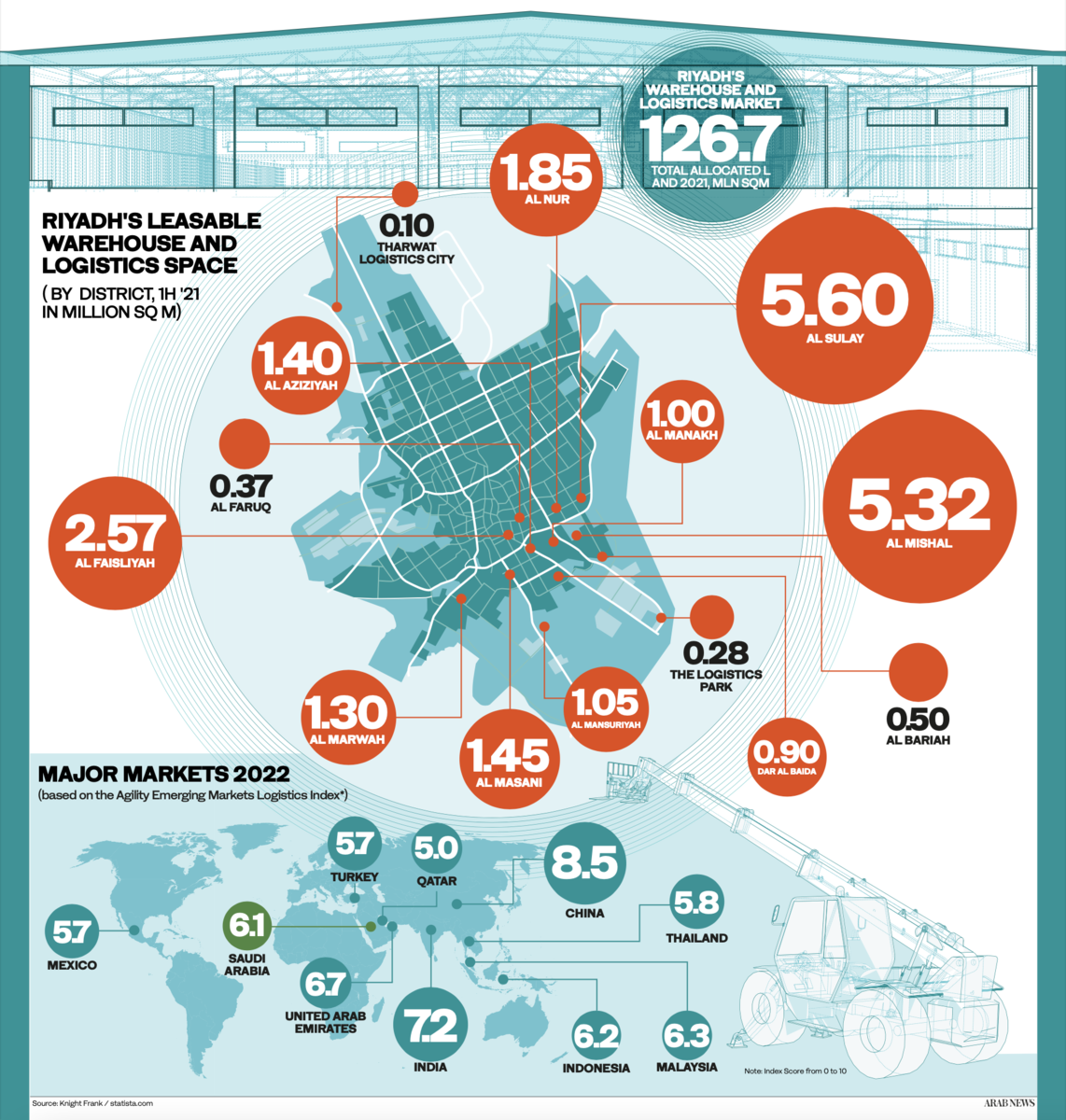RIYADH: Transport is a key factor in Saudi Arabia’s economic growth, whether by land, air, or sea, an important part of government policy is based on the logistics of moving goods and people.
The Kingdom’s Ministry of Transport has committed to huge changes in the logistics industry to support its Vision 2030 program of social and economic reform. An important pillar for the transition to an economy that is less reliant on oil is transforming the country into a logistics hub that connects the rest of the world with the Gulf Cooperation Council region.
Growing investment
The logistics industry in Saudi Arabia is valued at $18 billion and is ranked as one of the most attractive emerging markets in the GCC, according to a report by warehousing and transport firm Saudi Bulk Transport.
Logistics revenue in the Kingdom is expected to grow at a compound annual growth rate of 6.7 percent between 2020 and 2025, in line with the government’s strategy to develop the sector, according to a report by data firm Ken Research.

Much of this growth is overseen by Saudi Arabian government’s Transport General Authority, which is responsible for rail, sea, and land transport development.
“The Transport General Authority is ever-evolving and has introduced more forward-looking regulations to the land transportation space in Saudi Arabia,” Amit Agarwal, chief financial officer at regional transport firm TruKKer, told ArabNews.

Amit Agarwal, chief financial officer at TruKKer
The business runs an overland freight network across eight countries in the Middle East and Central Asia with a fleet of over 40,000 thousand trucks.
Agarwal points out that Saudi Arabia is the “largest market” in the GCC region, adding that the Kingdom is a “key factor” in the company’s global expansion plans.
According to the Kingdom’s Ministry of Finance, an estimated $15 billion was invested in infrastructure and transportation projects across the nation last year. Saudi Arabia’s maritime performance ranks fourth out of 30 countries in cargo and vessel handling in terms of tanker loading speed, according to a 2021 report by the UN Conference on Trade and Development.
Trella, a tech-based logistics firm that connects carriers with shippers and currently operates in four countries including Saudi Arabia, says that the Kingdom is using the latest systems to boost its logistics infrastructure.
Trella founder Omar Hagrass told ArabNews: “Trella is extremely optimistic and committed to the future of the Kingdom, the economy is diversifying and seeking to use the very latest technologies.”

Omar Hagrass, Trella founder
International deals
The Kingdom has also begun to open up the market by allowing international companies to partner with local players to boost private sector operations, such as Saudi Logistics Services’ agreement with UK firm Classic Automotive Relocation Services last October. The deal sees the Jeddah-based business provide logistics support for all of the British firm’s car shipments that pass through the Kingdom’s main air, land and seaports, including Riyadh, Jeddah, Dammam and Madinah.
Observers also expect new technologies to be adopted as the Kingdom moves to upgrade its supply chain, with radio frequency tracking systems and drone technology set to play a strong role in the nation’s transport network.


























